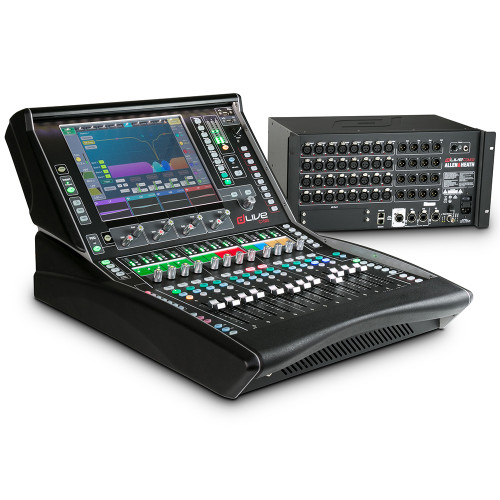Overview
dLive C Class C2500 20 Fader Surface, 12" Touchscreen, 1 Option I/O Port
The C2500 is a small-footprint yet powerful control Surface for the dLive MixRack. It features 20 faders over 6 layers, built-in audio I/O, an audio networking port, a 12″ capacitive touchscreen and the innovative Harmony UI for the fastest workflow in the industry.
Features
- 20 faders
- Fully assignable layout – 120 fader strips
- Harmony UI integrates screen and wrap-around controls19 assignable SoftKeys
- Single 12” capacitive touchscreen
- Gesture control – pinch, swipe, drag ‘n drop
- Dedicated multi-mode EQ view
- Configurable widget areas for Scenes, meters, FX and more
- 3 pages of 6 assignable rotaries
- Engineer’s Wedge and IEM fader strips
- Comprehensive multipoint metering
- Daylight visibility
- USB stereo recording and playback
- 6 XLR mic/line in, 6 XLR line out
- 1 digital st AES3 in, 1 digital st AES3 out
- Connection hub
- GigaACE gigabit link to MixRack
- DX link for I/O expansion
- I/O Port – 128 ch 96 kHz
- 2x Network ports
- Wordclock BNC I/O
- Video output
Harmony User Interface
Where many digital consoles are still trying to recreate the experience of using an analogue mixer, dLive is a true digital native, drawing on our familiarity with the ubiquitous smartphones and tablets that we all use without thinking. C2500’s 12” capacitive touchscreen feels instantly familiar, responding to every pinch, swipe, drag and drop exactly how you’d expect them to. Bespoke ‘widget’ areas can also be set up on the screen to keep track of scenes, meters, FX and other custom controls. The screen is complemented by a set of rotary controls, allowing the creativity and immediacy of tactile control over key processing functions, working in harmony with the visual feedback displayed on the screen. The high-grip rotary knobs offer precision control, and feature RGB illumination, with colours mapped to functions for instant
Transparent Workflow
C2500’s layout is fully customisable, allowing the user to create a mixing interface that reflects their own mental map of the show, or for an installer to set up the surface to match the venue and the experience levels of the operators. Throughout the dLive journey our guiding aim has been to create fast and transparent workflows that allow the operator to focus on the mix, not the mixer. Every input or mix can be assigned to any and every bank and / or layer, virtual scribble strips allow inputs and mixes to be clearly named and colour coded for at-a-glance navigation, and there are 19 assignable SoftKeys, plus 3 pages of 6 assignable rotaries.















